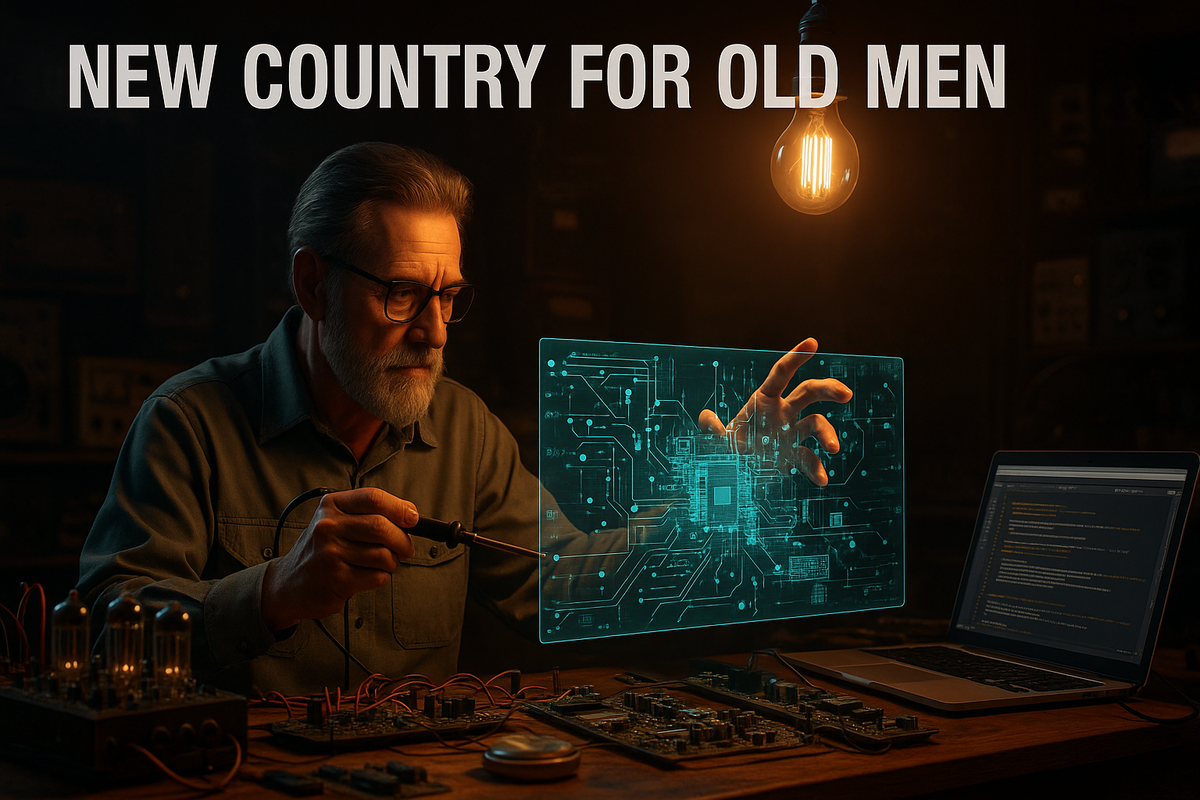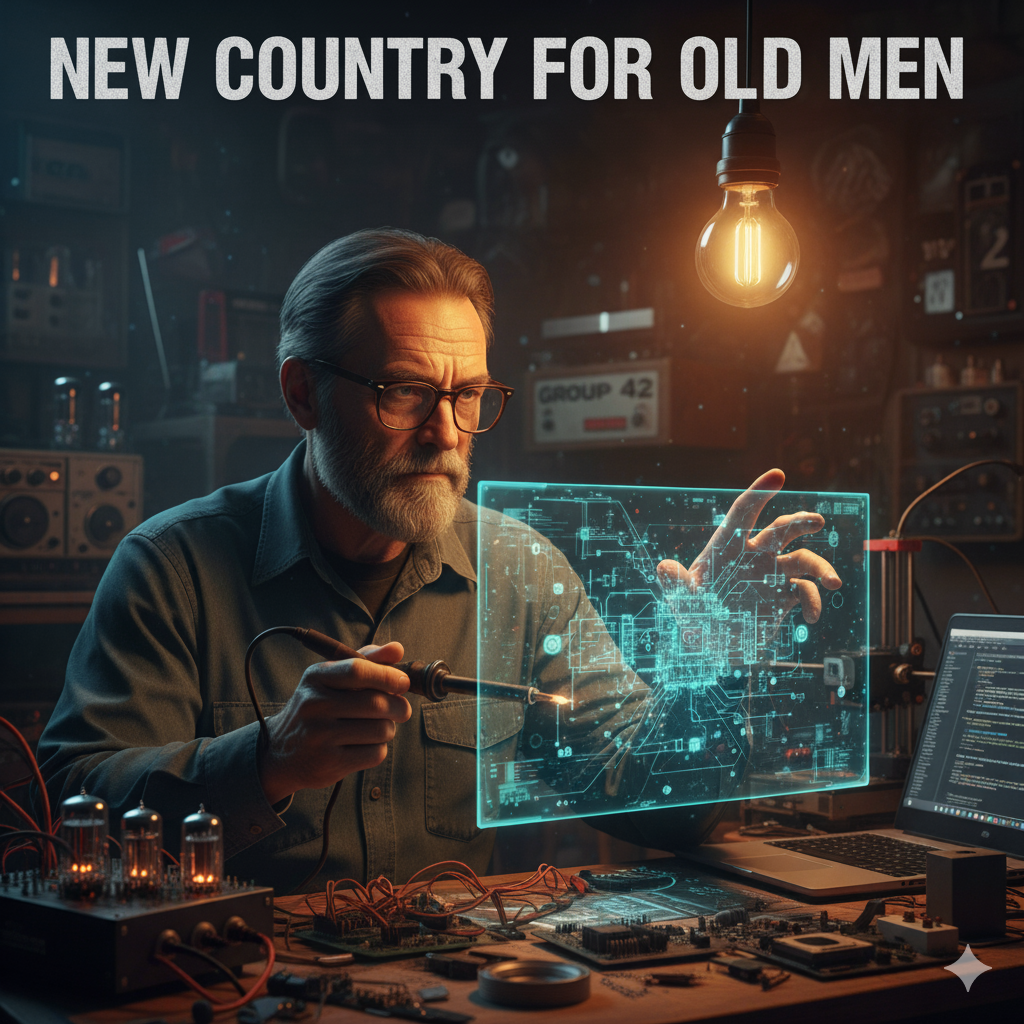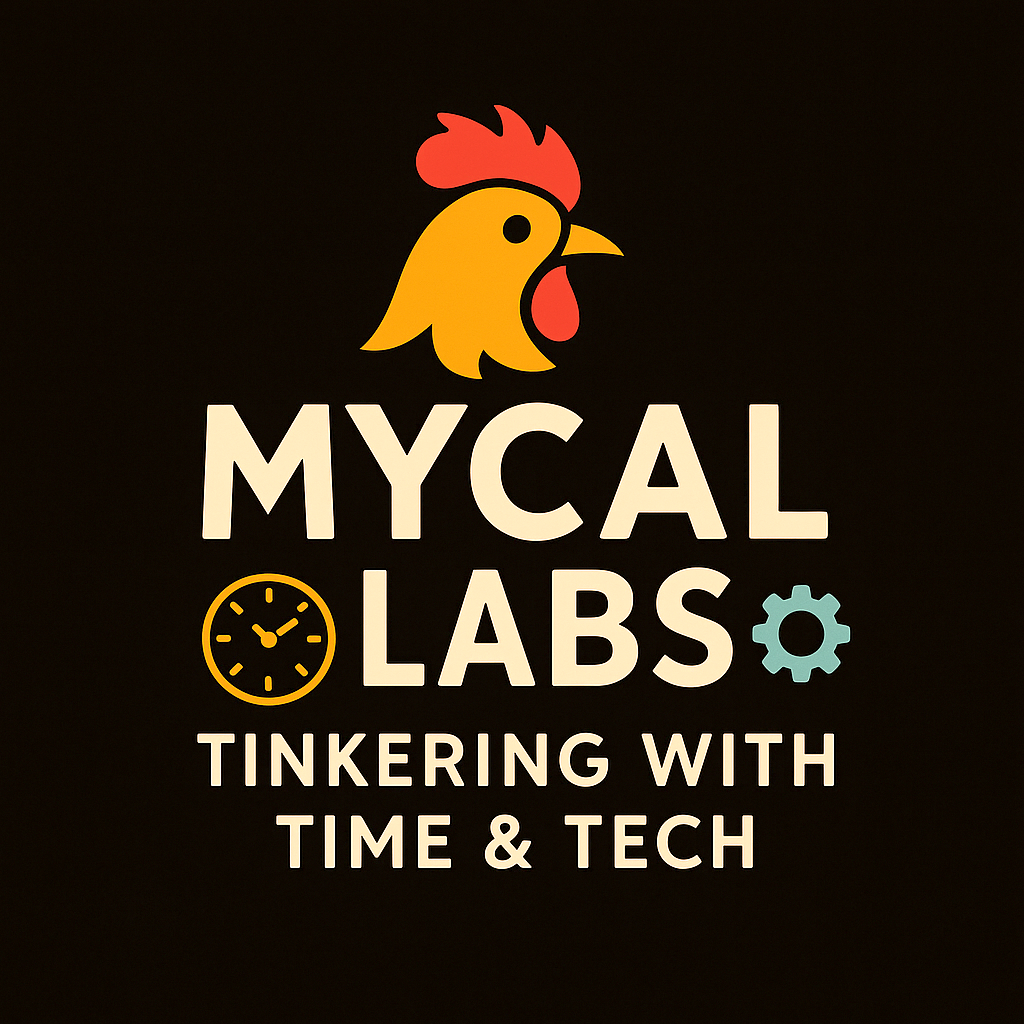New Country for Old Men
In the age of frictionless AI, the true makers are returning to the bench. New Country for Old Men explores what happens when experience meets curiosity—when older hands rediscover the hum, the heat, and the joy of building in a world that forgot how to tinker.

Reclaiming the maker-hacker spirit in the age of AI
Tinkering with Time, Tech, and Culture #21

The Solder-Smoke Grind
In the 1990s, I wasn’t coding in a sandbox.
I was playing with fire.
We didn’t have frameworks.
We WERE the frameworks.
If you wanted to learn, you stayed up all night — soldering iron in one hand, a datasheet you had no business touching in the other, a C compiler grinding away on the screen beside you.
Our world was IRQs, ferrite beads, and noise on the line — blue jumper wires hanging like nerves across a circuit board; TCP stacks hand-rolled from RFCs printed off a 14.4 modem.
We hacked cables, built micro-broadcast rigs, wrote socket daemons that barely held together on the 0.98.6 kernel, and pushed every watt — and every packet — out of systems that weren’t supposed to work.
Our foundation — if we were lucky — was Knuth, Stevens, Foley van Dam, and the Dragon Book.
We traded shell accounts, cracked crypto to understand it, and lived inside hex editors until sunrise.
You didn’t “vibe code.” You engineered. You debugged reality.
Every popped capacitor and every segmentation fault was a teacher, a brief detour through OxDEADBEEFCAFE.
That kind of learning sticks.
It’s the difference between knowing the theory of an amplifier or an algorithm — and knowing the smell, literal or metaphorical, of a blown one.
When the Signal Gets Too Clean
Fast-forward three decades.
AI made software frictionless — and friction was where the learning lived.
Back then, you could tell data from line noise by the sound through a modem.
Today the challenge is the same: discernment.
Models can write the code for a radio, but they don’t know why it should exist.
They can make it compile — they just don’t understand intent.
They don’t know what a spurious emission sounds like — or what it looks like on a spectrum analyzer.
They can generate a schematic, but they don’t know which part will burn under load.
They’ve never smelled failure — only simulated it.
They’re fluent, not wise.
And wisdom only comes from failure you’ve personally survived.
The Patent Parallel
I used to write patents.
The best ones weren’t from the fastest minds, but from the people who’d seen every way a good idea can die.
Older engineers write defensible patents because they’ve lived the failure modes — bad assumptions, ghosts in the machine.
They’ve walked the dead ends, so they can map the traps.
Same with AI.
The best results don’t come from who prompts the fastest — they come from who can tell when the model is confidently wrong.
That’s the real signal-integrity test.
Older Hands, New Tools
The only thing that stops an old hacker is the decision to stop tinkering.
Experience calcifies.
Muscle memory crowds out curiosity.
The edge that made you sharp turns brittle.
Break the shell.
Pick up a new dev board. Run a model. Hear that hum again — like the old modem tone.
That’s your younger self knocking.
You haven’t lost the fire — it’s just under a layer of rust. Scrape it clean, and the spark still jumps.
When older hands rediscover reckless curiosity, the results are nuclear. Not nostalgia — ignition.
The speed of AI meets the intuition of time — and suddenly, you’re building again.
A Message Across Generations
To the younger makers:
Don’t mistake fluency for understanding.
Go past the cloud and into the noise.
Build things that breathe, break, and teach.
Study failure, not just vibe.
That’s where mastery hides.
To the veterans:
Your scars are the dataset.
Your intuition is the debugging layer the machines don’t have.
The frontier isn’t behind you — it’s waiting for you to return, this time with memory and models.
Maybe it’s not a young man’s game anymore.
Maybe it’s everyone’s.
There’s a new country — cheap chips, powerful tools, signals waiting to be tamed. Pick up the iron. Spin up a model. Show it how the noise becomes signal. Build.
